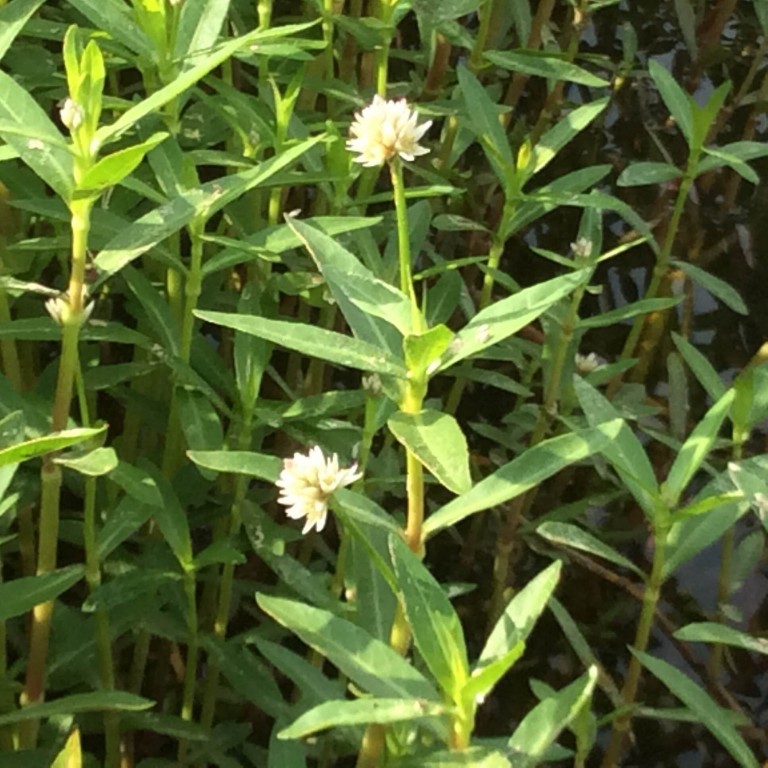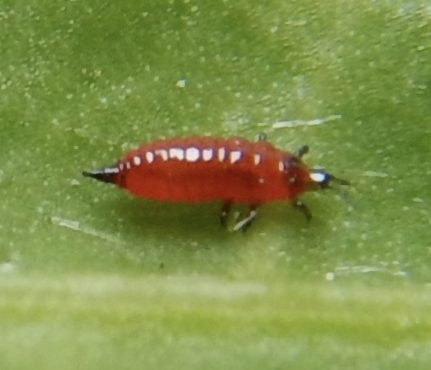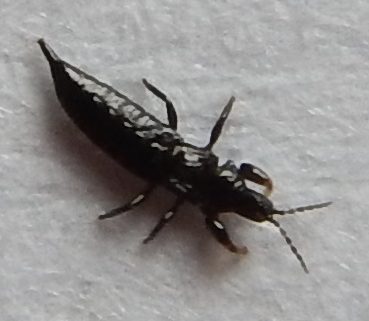Alligatorweed Control With Thrips
go.ncsu.edu/readext?714313
en Español / em Português
El inglés es el idioma de control de esta página. En la medida en que haya algún conflicto entre la traducción al inglés y la traducción, el inglés prevalece.
Al hacer clic en el enlace de traducción se activa un servicio de traducción gratuito para convertir la página al español. Al igual que con cualquier traducción por Internet, la conversión no es sensible al contexto y puede que no traduzca el texto en su significado original. NC State Extension no garantiza la exactitud del texto traducido. Por favor, tenga en cuenta que algunas aplicaciones y/o servicios pueden no funcionar como se espera cuando se traducen.
Português
Inglês é o idioma de controle desta página. Na medida que haja algum conflito entre o texto original em Inglês e a tradução, o Inglês prevalece.
Ao clicar no link de tradução, um serviço gratuito de tradução será ativado para converter a página para o Português. Como em qualquer tradução pela internet, a conversão não é sensivel ao contexto e pode não ocorrer a tradução para o significado orginal. O serviço de Extensão da Carolina do Norte (NC State Extension) não garante a exatidão do texto traduzido. Por favor, observe que algumas funções ou serviços podem não funcionar como esperado após a tradução.
English
English is the controlling language of this page. To the extent there is any conflict between the English text and the translation, English controls.
Clicking on the translation link activates a free translation service to convert the page to Spanish. As with any Internet translation, the conversion is not context-sensitive and may not translate the text to its original meaning. NC State Extension does not guarantee the accuracy of the translated text. Please note that some applications and/or services may not function as expected when translated.
Collapse ▲Article adapted from Dr. Diana Rashash, Area Specialized Agent, Water Quality at
Alligatorweed Thrips for Alligatorweed Control.
There is a new to North Carolina management strategy for alligatorweed control. Alligatorweed (Alternanthera philoxeroides) is an invasive aquatic weed native to Brazil that arrived in the southeastern US in the early 1900s. The plant has opposite leaves, a hollow stem, and a white clover-like flower. It grows very well in our ditches, ponds, and waterways. Healthy alligatorweed has distinctive, white, clover-like flowers and can spread through fragmentation, with each node capable of forming a new plant. This allows for easy transport and spread through activities like mowing or boating, and especially through drainage in ditches and
waterways.
Typical chemical control measures have included the use of glyphosate applied at regular intervals throughout the growing season. From 2006-2015, several counties in eastern NC received Alligatorweed flea beetles (Agasicles hygrophila) in hopes that they would be a useful integrated pest management (IPM) practice. Flea beetles feed on foliage and can do a good job of knocking back alligatorweed. Unfortunately, NC is at the northern edge of their cold tolerance. Despite repeated attempts, strong colonies of the alligatorweed flea beetles were not
attained.
In August 2018, a sample of “sick” alligatorweed from a pond in Onslow County was sent to the NC State University Plant Disease & Insect Clinic (PDIC) and the Army Corps of Engineers lab in Vicksburg, MS. Both laboratories confirmed the presence of alligatorweed thrips (Amynothrips andersoni O’Neill). The adult a. thrips is approximately 2 mm in size, and the larvae are roughly 1.5 mm. This was the first confirmed sighting of alligatorweed thrips in NC. The a. thrips have a broader cold tolerance than the flea beetle. The a. thrips at the Onslow site
easily survived the 10-day freezing spell during winter 2018. This gives us hope that a. thrips will be a good IPM agent.
The a. thrips juveniles and adults only eat alligatorweed, so there is no risk to other plants or crops. Early damage appears as discolored and curled leaves. A high level of predation can completely defoliate a patch of alligatorweed. These are tiny, yet mighty insects!
Since their discovery in NC, the alligatorweed thrips have been provided to the N.C. Department of Agriculture and Consumer Services, Beneficial Insect Lab. NCDA&CS is establishing a breeding population. The Cooperative Extension Service has placed thrips in several locations in Eastern NC, including this year in Pamlico County.
As of July, actively feeding alligatorweed thrips have been found in four locations in Bayboro and Stonewall, approximately 2 two miles from their original locations.
Alligatorweed can clog waterways and drainage ditches, leading to washouts and restricted waterflow. This poses difficulties in use of water resources and often leads to flooding in agricultural fields and residential properties. Hopefully this tiny insect will help to reduce these hazards and limit the continual spread of this invasive plant.
If you would like more information on this topic, please contact Daniel Simpson at 252-745-4121 or daniel_simpson@ncsu.edu.







